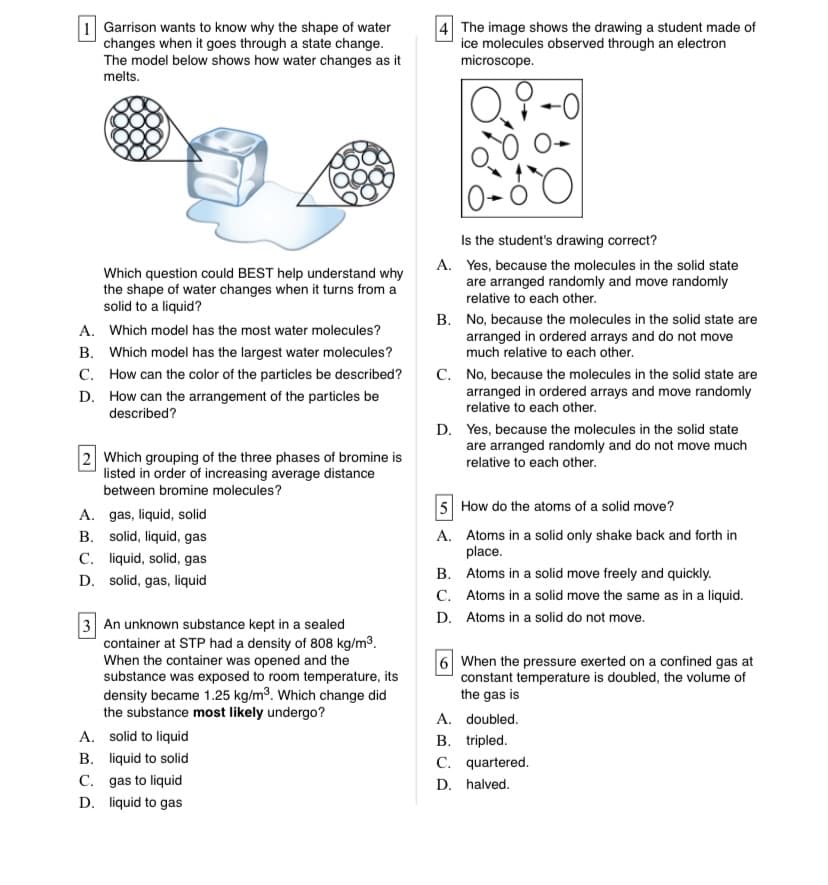3 An unknown substance kept in a sealed container at STP had a density of 808 kg/m3. When the container was opened and the substance was exposed to room temperature, its density became 1.25 kg/m3. Which change did the substance most likely undergo? A. solid to liquid B. liquid to solid C. gas to liquid D. liquid to gas
Kinetic Theory of Gas
The Kinetic Theory of gases is a classical model of gases, according to which gases are composed of molecules/particles that are in random motion. While undergoing this random motion, kinetic energy in molecules can assume random velocity across all directions. It also says that the constituent particles/molecules undergo elastic collision, which means that the total kinetic energy remains constant before and after the collision. The average kinetic energy of the particles also determines the pressure of the gas.
P-V Diagram
A P-V diagram is a very important tool of the branch of physics known as thermodynamics, which is used to analyze the working and hence the efficiency of thermodynamic engines. As the name suggests, it is used to measure the changes in pressure (P) and volume (V) corresponding to the thermodynamic system under study. The P-V diagram is used as an indicator diagram to control the given thermodynamic system.

Trending now
This is a popular solution!
Step by step
Solved in 2 steps









